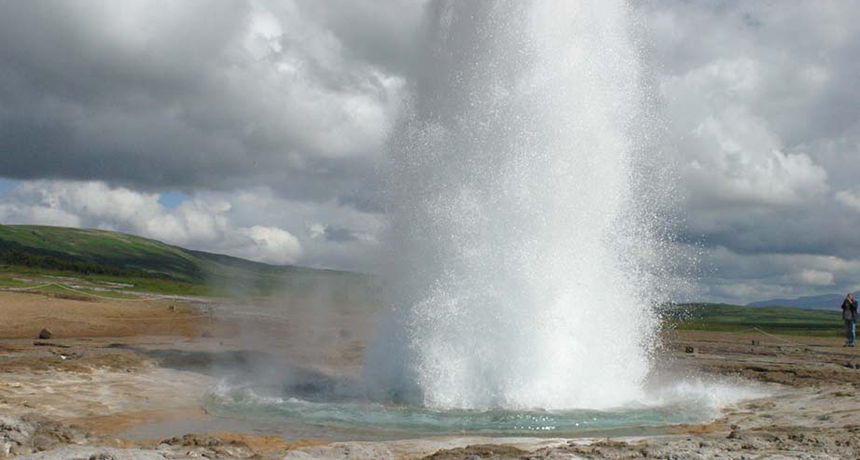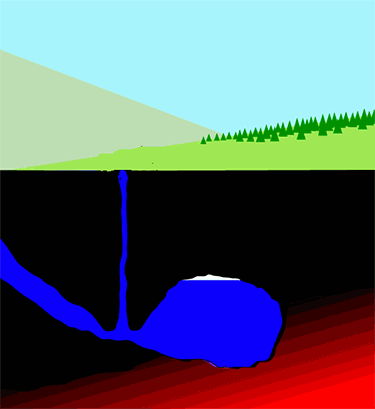boil To heat a liquid to the temperature at which it turns to vapor.
Enceladus The sixth largest of Saturn’s more than 50 moons. Enceladus is bright white and covered with a thick shell of ice. Deep beneath that ice sits what appears to be a global ocean of salty liquid water. Enceladus is a round sphere, 500 kilometers (310 miles) across. It is a little less than one-third the width of Earth's moon.
geyser A vent (opening) in Earth’s surface that intermittently sends up a tall spray of steam or hot water. The sometimes explosive discharge of water and steam is propelled by the geothermal heating of water below ground.
Iceland A largely arctic nation in the North Atlantic, sitting between Greenland and the western edge of Northern Europe. Its volcanic island was settled between the late 800s and 1100 by immigrants from Norway and Celtic lands (ones governed by the Scots and Irish). It is currently home to roughly a third of a million people.
magma The molten rock that resides under Earth’s crust. When it erupts from a volcano, this material is referred to as lava.
moon The natural satellite of any planet.
New Zealand An island nation in the southwest Pacific Ocean, roughly 1,500 kilometers (some 900 miles) east of Australia. Its “mainland” — consisting of a North and South Island — is quite volcanically active. In addition, the country includes many far smaller offshore islands.
pressure Force applied uniformly over a surface, measured as force per unit of area.
vent (n.) An opening through which gases or liquids can escape. (v.) To free gases or liquids that had been under pressure. The term can also be used to release strong, pent-up emotions, such as anger.









